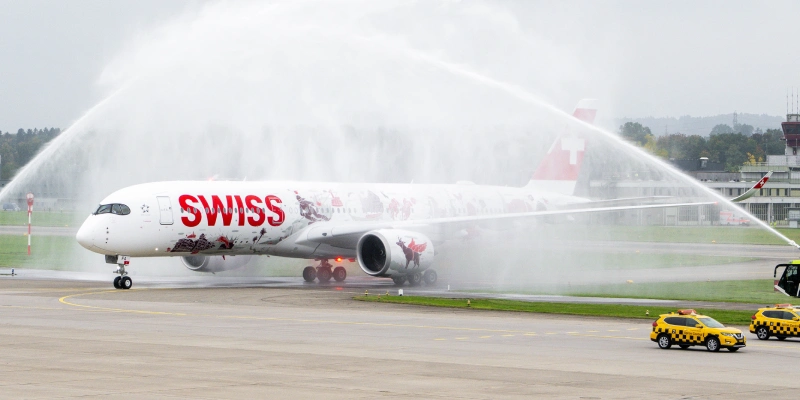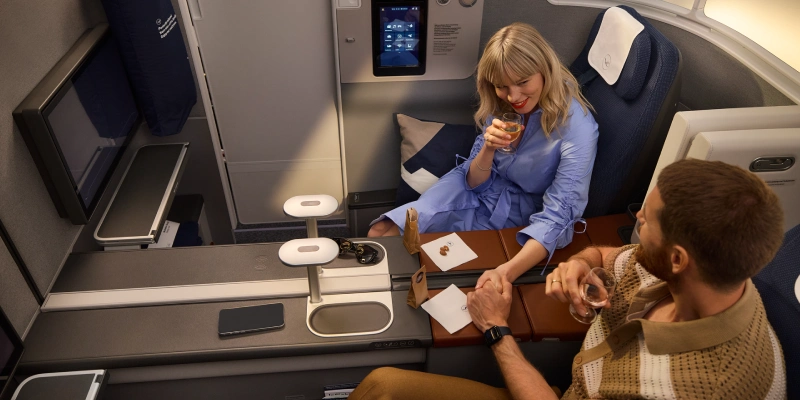The Colombian Minister of Transportation, Guillermo Francisco Reyes González, visited the José María Córdova International Airport and announced the new interventions that will be carried out in the infrastructure of this terminal.
According to the minister, the airport serving Medellín will go from receiving 11 million passengers to 13.5 million with a specific objective: to improve the stay of users and provide better service.
→ Panama: Air France and KLM to operate from Tocumen Airport’s Terminal 2 starting in January
In his tour of the terminal located in the municipality of Rionegro, Reyes assured that more than COP 45,300 million will be delivered by the nation to be executed by the concessionaire Airplan.
These are some of the works to be carried out:
- Increase 20 traditional registration positions from 56 to 76.
- Installation of 20 more kiosks for automatic registration.
- Construction, on the international side, of an additional conveyor system.
- Installation of a new X-ray machine and conveyor system to be incorporated into the existing BHS system.
- Demolition, on the second floor, of offices and adaptation of this area as a platform to increase the baggage screening area by 280m2.
- Demolition of the fixed concrete stairs to enlarge the queue areas.
- Construction of a new waiting room on the second floor, joining three existing spaces, to increase an area of 2,150 m2, with six boarding doors, for passengers to board the bus and board remotely.
- Construction of a new remote baggage claim hall: a new, one-story building, with an area of approximately 600 m2, light metal structure, at the end of the domestic pier. This room will have two baggage belts, information facilities with BIDS screens and a sanitary battery.
- Demolition of four commercial spaces on the international pier, near boarding gate 9, to convert it into a waiting room and place seating.
- Increase in the number of seats in the domestic lounge from 716 to 942.
- Increase of seats in the international lounge from 620 to 880.
- Renovation of eight toilet batteries. The interior was demolished to place more sanitary units: (two bathrooms in the public area on the second floor, two bathrooms in the domestic dock, two bathrooms in the international dock and two bathrooms in baggage claim 2 and 3).
Adaptation of the current connection module:
– Three double migration modules.
– Six corridors for biig (biometric data): three for inter/national connections and three for national/inter.
– Three security filters for connections: two for national/inter and a new one for international.
For the General Director (E) of Civil Aeronautics, Francisco Ospina Ramírez, “these works represent the initial results of the technical work and budget management of Civil Aeronautics, the willingness and expertise of the National Infrastructure Agency, as well as the support of the Regional Government and the Concessionaire. We hope that this strategy materializes soon, for the benefit of users and that we can work with the Ministry of Transportation and the region in the projection of the aeronautical model for the next 30 years. This is the great challenge ahead.”
Related Topics
British Airways Introduces New VIP Lounge Concept with Openings in Miami and Dubai
SWISS’s First Airbus A350 Lands in Zurich, Marking a New Era for Airline
Lufthansa Debuts New Allegris Cabin on Flights from Frankfurt to Toronto, Rio de Janeiro, Bogotá, Hyderabad, and Austin
United Airlines Strengthens Transatlantic Leadership with Flights to New Cities in Croatia, Italy, Scotland, and Spain for Summer 2026

Plataforma Informativa de Aviación Comercial con 13 años de trayectoria.




